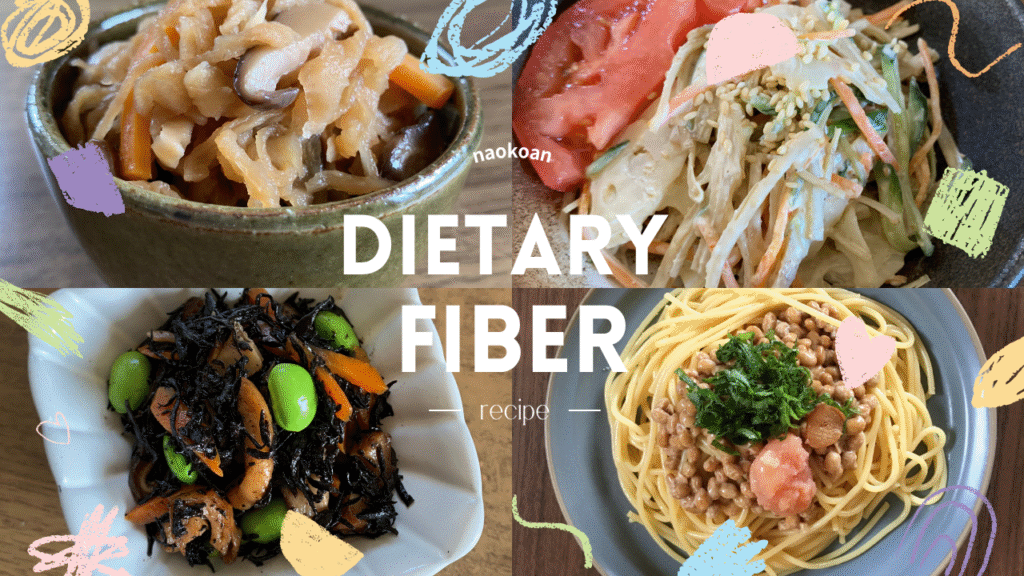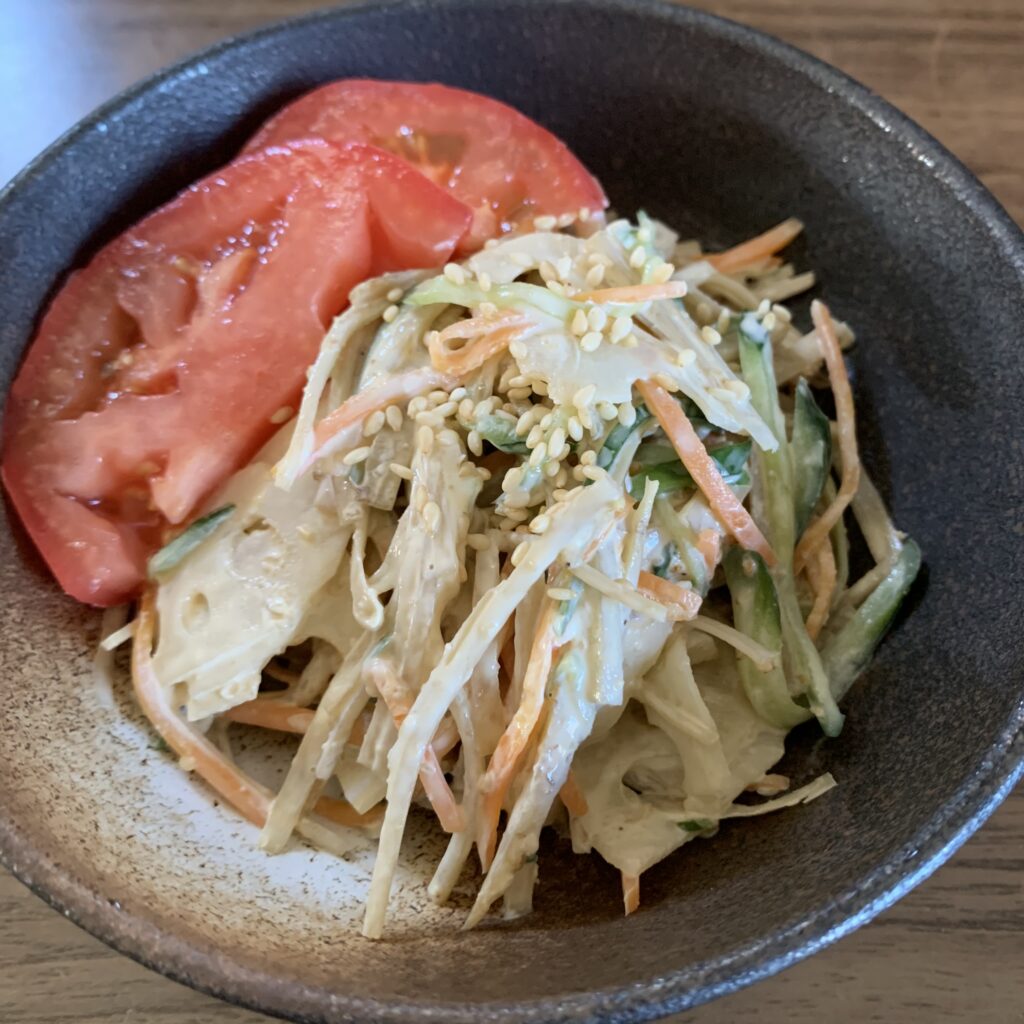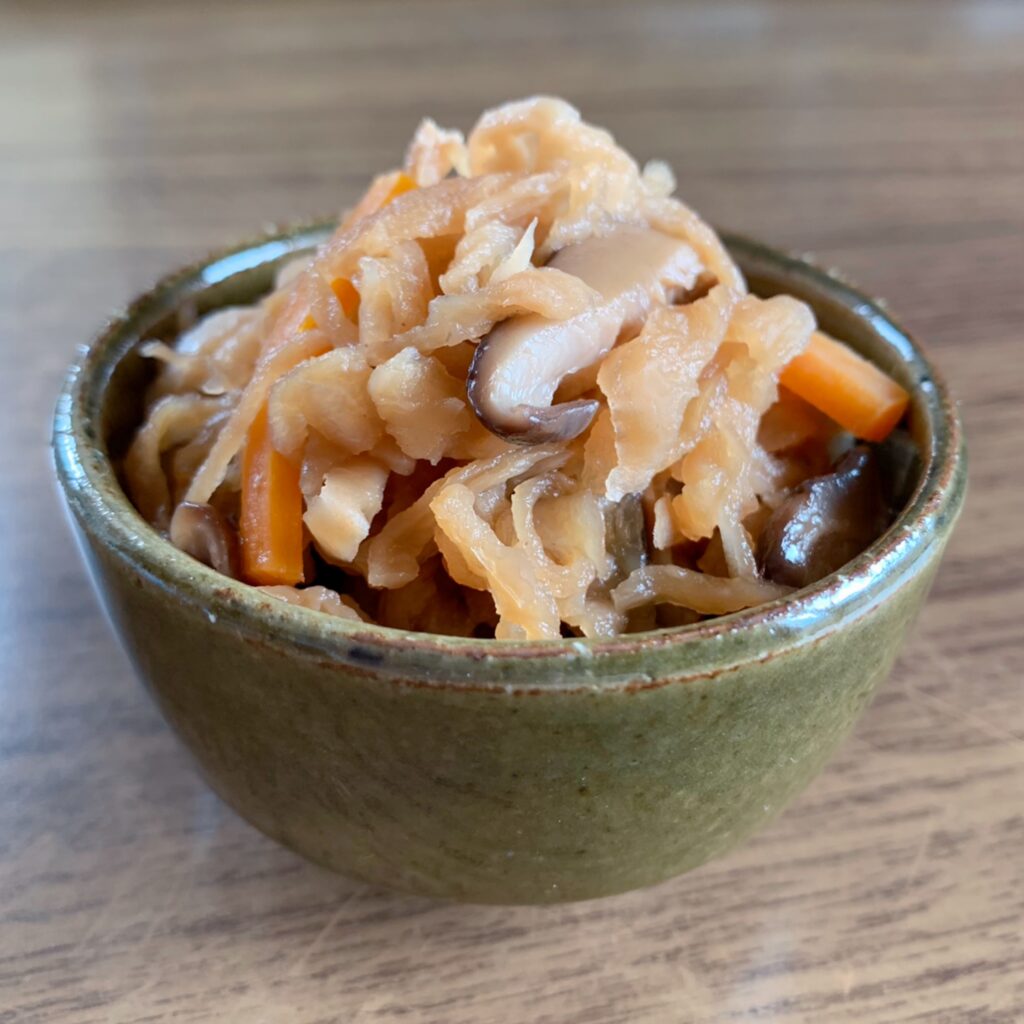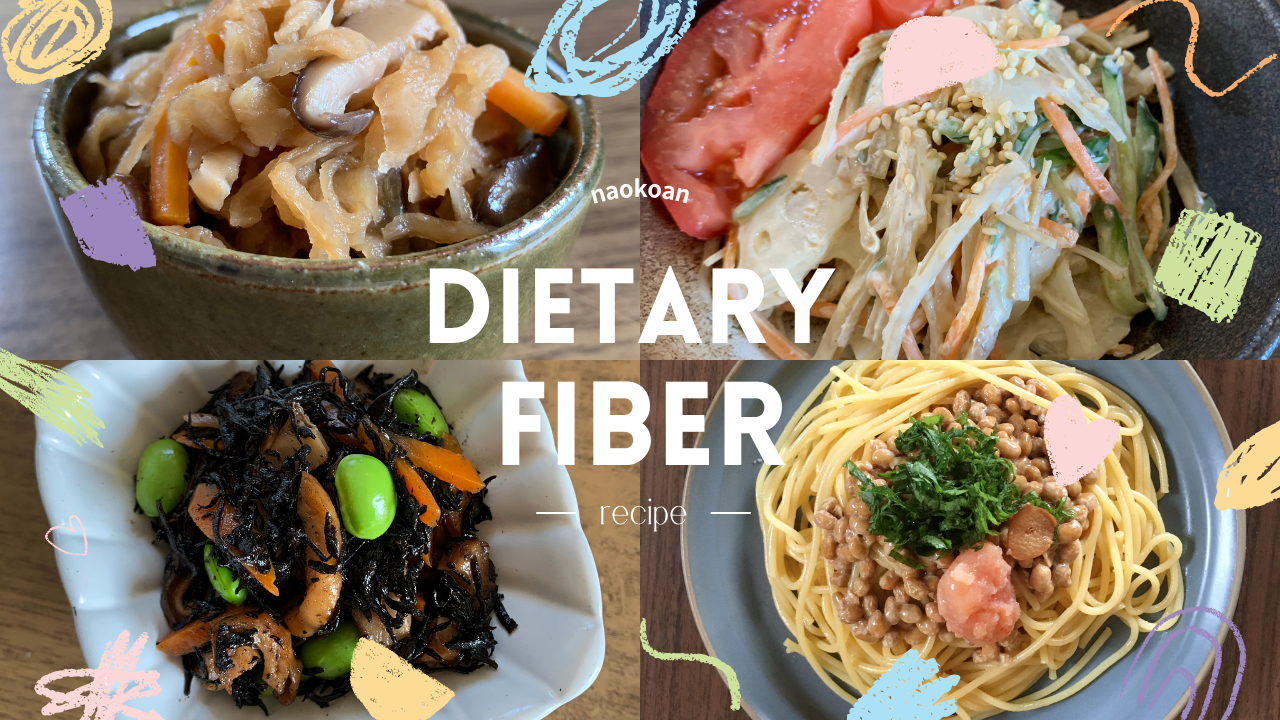
About dietary fiber
The main function of dietary fiber is to regulate the intestines.
There are two types of dietary fiber: “soluble” and “insoluble”.
- Insoluble dietary fiber does not dissolve in water, but absorbs water and swells. This increases the volume of stool, stimulates intestinal function, and leads to the elimination of constipation.
- Improved bowel movements reduce harmful substances in the intestinal tract.
- Insoluble dietary fiber is hard and increases the number of times you chew, preventing overeating, promoting jaw development, and preventing tooth decay.
- Soluble dietary fiber slows the excretion from the stomach to the small intestine and inhibits the absorption of cholesterol and bile acids in the small intestine.
- It suppresses the absorption of sugar and fat, and gently reduces the rise in blood sugar levels and blood triglycerides after meals.
- “Soluble” dietary fiber is known to be more easily fermented than “insoluble” and therefore more likely to become food for good bacteria.
It is important to supplement dietary fiber in a balanced manner, both insoluble and soluble.
Recipes Recipes rich in dietary fiber
Here are some recipes that are rich in dietary fiber. Each article has details, so be sure to check them out.
Gobo salad

Burdock, lotus root, carrots, and cucumber cut into thin stripes and tossed in sesame mayonnaise sauce. This gobo salad is one of my favorites.
The secret ingredient is ground sesame, which adds an extra richness to the flavor.
Total Nutrition Value

- 347 Calories
- Protein 8.3 g
- Total Fat 15.2 g
- Total Carbohydrates 51.3 g
- Sodium 5.3 g
- Dietary fiber 12.1 g
Kiriboshi Daikon Nimono (Simmered Dried radish)

This is a simmered dried daikon radish with a wonderful dashi flavor. It is a standard menu of home cooking. It’s a dish that fits any occasion, whether it’s breakfast or a bento box. The aroma of dashi soup calms people’s minds. It has a very gentle taste.
Total Nutrition Value

- 415 Calories
- Protein 16.9 g
- Total Fat 6.3 g
- Total Carbohydrates 77.0 g
- Sodium 7.4 g
- Dietary fiber 19.1 g
Hijiki Nimono (Hijiki Seaweed salad)

Hijiki nimono is a dish made by boiling hijiki seaweed in a broth made from dried shiitake mushrooms and seasoning it with soy sauce and sugar. Hijiki nimono is a representative dish of Japanese home cooking.
TOTAL NUTRITION VALUE

- 289 Calories
- Protein 11.8 g
- Total Fat 9.0 g
- Total Carbohydrates 41.7 g
- Sodium 4.2 g
- Dietary fiber 12.4 g
Natto Tarako Spaghetti Peperoncino

A Japanese style spaghetti with soy sauce and mirin added to peperoncino. The combination of natto, tarako and green shiso leaves is a favorite in Japan.
TOTAL NUTRITION VALUE

- 633 calorie
- Protein 33.6 g
- Total Fat 17.4 g
- Total carbohydrate 90.2 g
- Sodium 3.3g



コメント